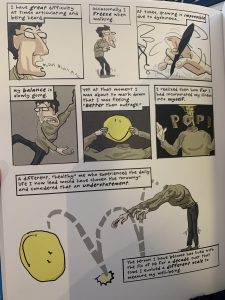Barclay and Scott articulate the importance of “flattening the curve” in their Vox article regarding COVID-19. While it is frightening that research has noted that “20 to 60 percent of adults” will be infected with coronavirus at one point or another, and rumors claim that everyone will be infected eventually, it is contrastingly encouraging that the medical system is prepared and understands its own capacity. Countries like China, South Korea, and Italy have experienced great loss due to a worldwide lack of knowledge about the virus and infrastructural/social changes that were implemented too late. While the outbreaks in these countries have been heartbreaking, they have provided crucial information about how to slow and stop the outbreaks in other countries worldwide. The early intervention of social distancing and the closing of businesses has vastly improved the rate at which coronavirus spreads, especially because it travels through the air and can live on surfaces for extended periods of time.
Interestingly, this disease primarily affects older people and those with preexisting chronic conditions like diabetes; this disparity has had an effect upon the extent to which social distancing is practiced by individuals. Many young adults have not taken quarantining as seriously as they should simply because they are not the demographic most at risk of severe symptoms, but Barclay and Scott note that “even if you’re young and healthy, it’s your job to follow social distancing measures to avoid spreading it to others.” An important frame of thinking about quarantine is that it is not necessarily to protect you, but to protect others. It is alarming to think that young people can be nearly asymptomatic and still highly contagious, since the disease spreads so easily and many people are unaware of being infected until someone at risk becomes sick. For this reason, articles such as this one from Vox are communicating crucial information regarding civic duty and utilizing emotional and logical rhetoric (by communicating the shortage of ventilators in the case of outbreak and other data) to emphasize the gravity of this global pandemic and importance of social responsibility.
References
Barclay, Eliza, and Dylan Scott. “How Canceled Events and Self-Quarantines Save Lives, in One Chart.” Vox, 10 Mar. 2020, www.vox.com/2020/3/10/21171481/coronavirus-us-cases-quarantine-cancellation.
